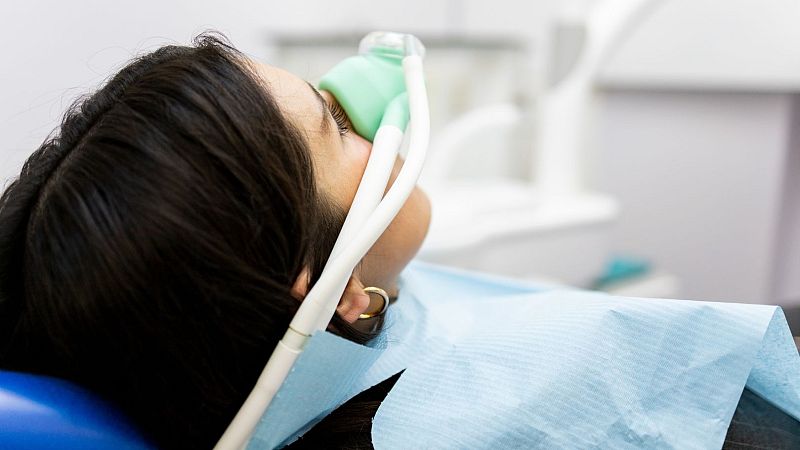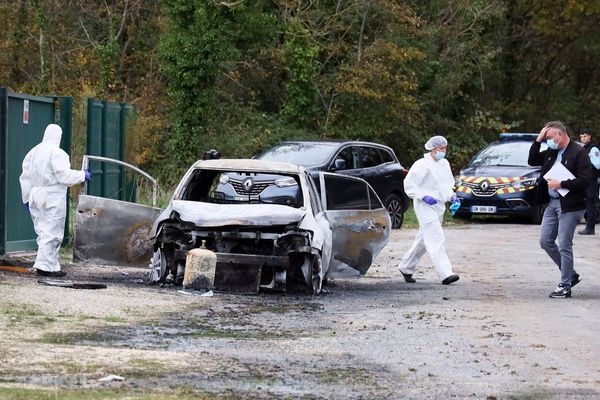
An Irish hospital is trying to prevent unused laughing gas from escaping into the atmosphere, in a bid to curb waste and go green in healthcare.
Nitrous oxide, also known as laughing gas, has long been used to relieve pain and relax patients ahead of surgery – but outdated hospital infrastructure means much of the anaesthetic gas is actually wasted and released into the atmosphere, where it remains for around 120 years.
That’s prompted concerns among health experts across Europe, who say leaks and other efficiency problems are worsening the environmental impact of a sector that is already among the heaviest polluters worldwide.
This is “the most important issue for us to look at by quite some distance,” Dr Paul Southall, sustainability lead for the UK’s Royal College of Anaesthetists, told Euronews Health.
Now, St John’s Hospital in Limerick has become one of the first hospitals in Ireland to stop using nitrous oxide as an anaesthetic on a large scale after deactivating the extensive network of pipes that fed the gas directly to the hospital’s operating rooms.
“Nitrous oxide is safe to use, but the infrastructure used to deliver it inevitably results in waste,” said Dr Hugh O’Callaghan, a consultant anaesthetist involved with the St John’s project.
In a statement, he added that modern methods to deliver anaesthesia are making laughing gas increasingly “obsolete”.
St John’s will now rely on mobile equipment to bring anaesthetic cylinders directly into the operating room, according to Ireland’s health services agency.
Other Irish hospitals in the region are expected to follow suit in the coming months as part of a plan to reduce carbon emissions from anaesthetic gases by 50 per cent by 2030, the agency said.
Other European hospitals are also phasing out piped-in methods of delivering laughing gas, including those in the Netherlands and the United Kingdom.
In the UK, for example, two hospitals replaced their large centralised nitrous oxide containers with small portable cylinders that could be wheeled into the operating room.
This led to a 55 per cent reduction in monthly nitrous oxide emissions, from 333 tonnes to 150 tonnes, according to the National Health Service (NHS) in England.
“It’s not about restricting clinical use, it’s about creating a less wasteful system,” said Dr Cliff Shelton, a UK-based anaesthetist, professor, and co-chair of the safety, standards, and environmental sustainability committee at the Association of Anaesthetists, a professional group focused on the UK and Ireland.
Last year, the group said UK and Irish hospitals should decommission their nitrous oxide pipelines “as soon as possible,” ideally by 2027.
In recent years, the health trust in Manchester, where Shelton works, has switched to a mobile-canister approach for nitrous oxide that he said has reduced the organisation’s overall carbon footprint by about three per cent to five per cent.
“We've made it cheaper and greener, and people are still getting the same [anaesthetic] care they always got,” he told Euronews Health.
Health sector’s link to climate change
These efforts are part of a broader reckoning among medical workers about how their field is exacerbating climate change, which is linked to a host of health issues, such as asthma, stroke, and mosquito-borne diseases.
Globally, the health sector causes 4.4 per cent of net emissions, with the European Union contributing 248 million metric tons of carbon dioxide – behind only the United States and China, according to a 2019 report from the advocacy group Health Care Without Harm.
When used as anaesthesia, laughing gas adds an additional one per cent to the EU health sector’s carbon footprint, the group found.
Other commonly used anaesthetic gases, such as sevoflurane, isoflurane, and desflurane, also contribute.
But the vast majority of the health sector’s carbon emissions are related to its supply chain – the production, transport, use, and disposal of medicines, medical kits, and other resources.
That means minimising waste of nitrous oxide and other gas-based anaesthetics won’t be enough for hospitals to offset their climate impact.
Even so, sustainability-minded doctors believe it is a good start.
“When we looked into this, we found we were buying 100 times more nitrous oxide than we were actually using,” Shelton said.
“It’s a moral imperative, really, to get on top of that [degree of waste],” he added.







